Thirteen bankers from Cambodia, Iran, Nepal, Sri Lanka, Taiwan and Vietnam participated in the “Best Practices in AML/CFT Governance and Operations” hosted by Fintelekt Advisory Services (Fintelekt) in Mumbai, India on March 7-9, 2019.
During the three-day program, the delegates had the opportunity to engage in deep and detailed discussions with experienced bankers concerning AML/CFT (Anti-money laundering/Counter financing terrorism) governance standards and operations across different types of banking business models, study critical factors in AML/CFT compliance, observe the Aadhar national identification program and the national common KYC registry of India, as well as learn advancements in AML/CFT technology.
March 7, 2019
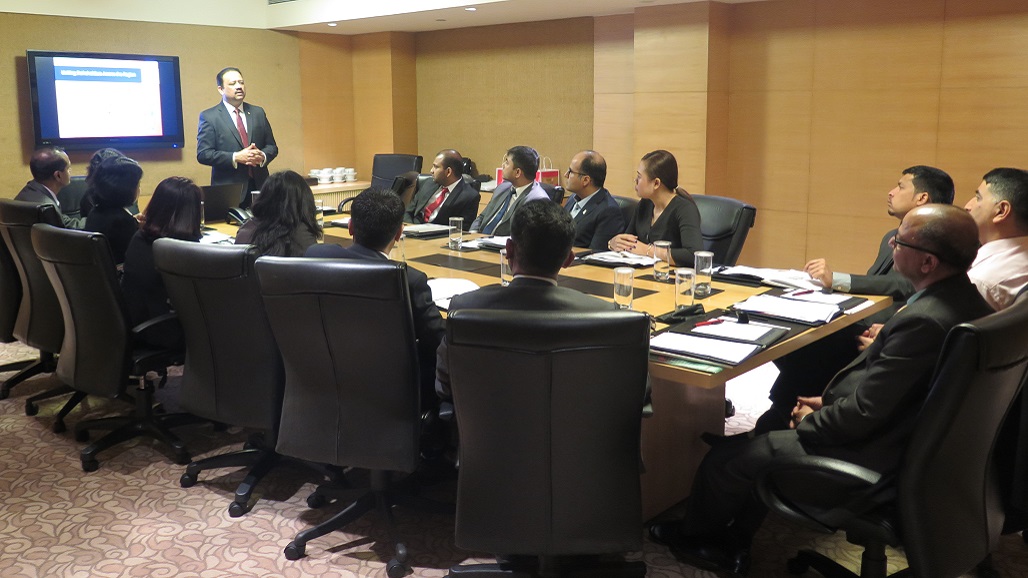
The first day started with a meeting at the Hotel Grand Hyatt, where Shirish Pathak, Managing Director of Fintelekt Advisory Services, with the assistant of Arpita Bedekar, Marketing Director of Fintelekt Advisory Services, discussed issues in FATF (Financial Action Task Force) high risk jurisdictions, the impact of weak AML/CFT regime and how the financial systems of regional countries such as Indonesia, Nepal, Malaysia, Philippines, Sri Lanka and Vietnam are doing with respect to AML policy implementation.
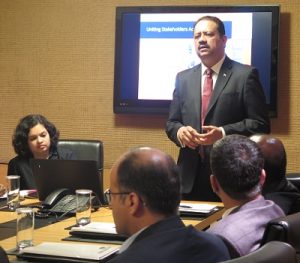 Mr. Pathak also detailed the process used by professional money launderers, as well as Fintelekt’s Certified AML Professional (FCAP) training programme, which has provided training and certification to over 230 bankers across the region on AML/CFT compliance.
Mr. Pathak also detailed the process used by professional money launderers, as well as Fintelekt’s Certified AML Professional (FCAP) training programme, which has provided training and certification to over 230 bankers across the region on AML/CFT compliance.
After the Fintelekt presentation, all the delegates were transported to Axis Bank, the third largest private bank in India where they were warmly received by Sharad Nair, VP, Head of AML and Rudrapriyo Ray, Chief Compliance Officer.
Mr. Nair proceeded to explain the dimensions of Axis’s operations, with 70 million customers and more than 10 million transactions per day. Under his command, Mr. Nair explained, 50 analysts at the Axis’ AML Unit monitor all transactions and select suspicious ones for further analysis using special algorithms created internally.
According to Mr. Nair, many transactions raise AML concerns immediately upon registration, such as those dealing with bullion, diamonds and metals. However, given the immense proportions of India’s customer base, risk is categorized by region, customer, product and channel.
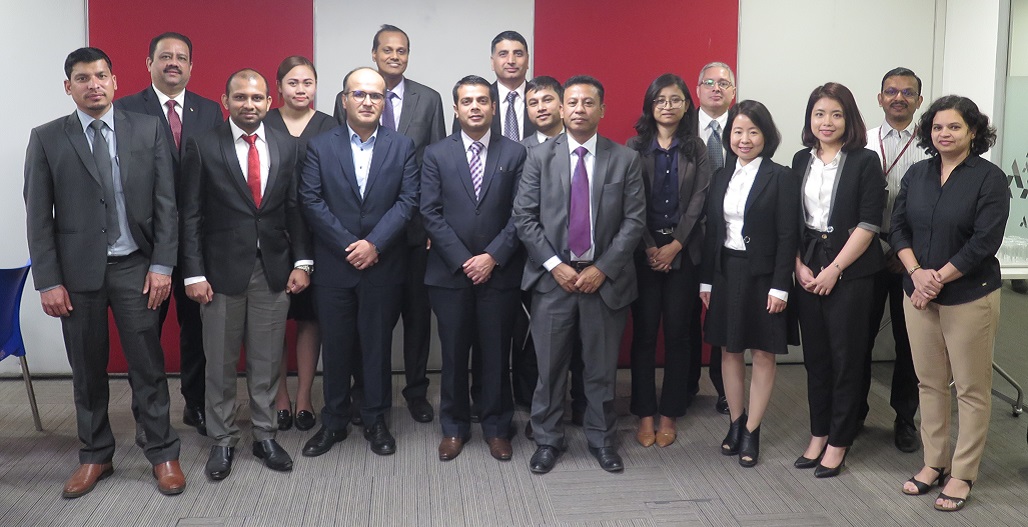
New and costly KYC (Know your customer) regulations particular to India were further explained. For instance, Indian banks have to personally corroborate the clients’ information by visiting their premises upon account opening. This has forced many banks to dedicate large amount of resources to maintain a compliant financial institution. Moreover, field re-verification of customers is required every 13 years.
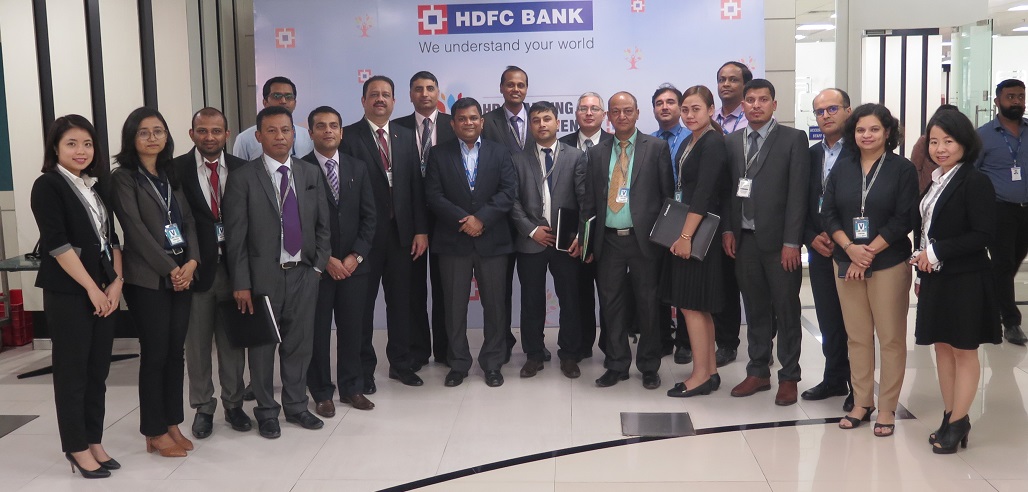
After lunch, the delegates were driven to HDFC Bank, where they were received by Ravi Lahoti, VP, Principal Officer & Heal AML, and Sachin R. Nambiar, Assistant VP of AML.
Mr. Ravi explained first the AML framework based on Basel principles, FATF, and Asia Pacific Group on Money Laundering which many delegates were familiar with.
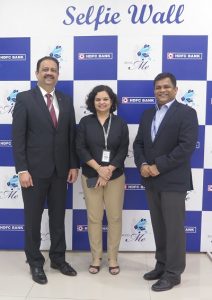
Mr. Ravi proceeded to introduce the AML framework developed in India, which demands reporting to domestic entities, and includes Intelligence and Law Enforcement Agencies particular to this market.
Mr. Ravi also shared with delegates the organizational structure of the HDFC bank and the role played by AML/CFT in the bank’s overall operation.
In terms of AML, Mr. Ravi summarized the AML strategy in the three lines of defense: (1) business/operations, (2) compliance and (3) internal audit and further explained the particular characteristics of each section.
A substantial part of his presentation featured trade-based money laundering since trade has become an increasingly effective way to launder money. In this regard, Mr. Ravi detailed the traditional ways of executing money laundering and then reviewed with the delegates the emerging ones that have been detected.
Mr. Ravi concluded by sharing with delegates a list of red flags that could help identify money laundering risks and help delegates to be more effective in their jobs.
March 8, 2019
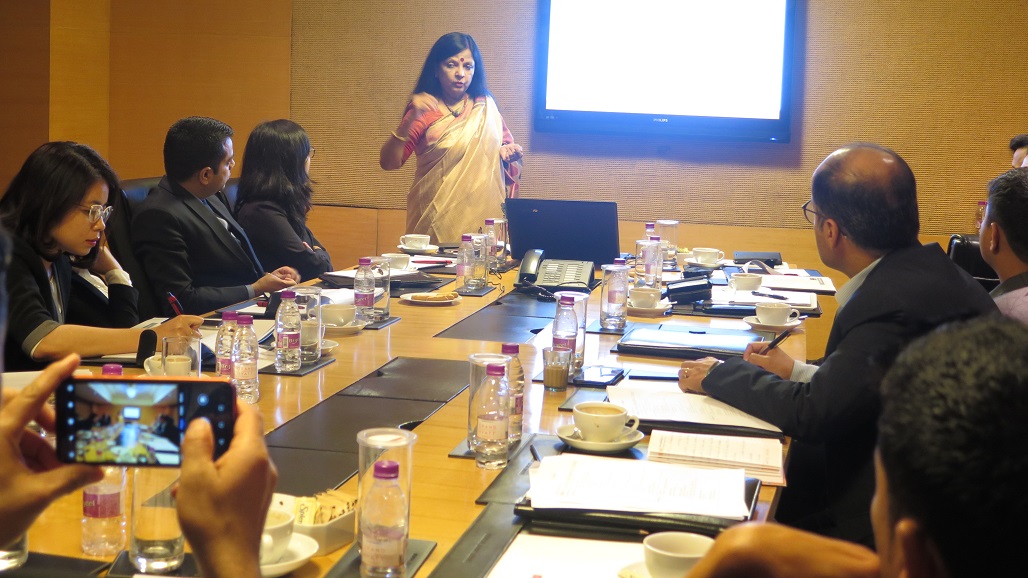
The second day started with a meeting at the Grand Hyatt with Ms. Theresa Karunakaran, Director, Regulatory Affairs and Mr. Nitin Kataria, Director, Head Financial Crime, South Asia of Deutsche Bank.
Ms. Karunakaran’s detailed presentation featured the correspondent banking environment, the players, and the interactions during the transaction process. Ms. Karunakaran leveraged her decades of experience in correspondent banking to carefully explain the dynamics, cost, and repercussions of the new regulatory environment in the Indian banking market.
Since correspondent banking is an ongoing repetitive process, she advised AML officers to assume that risks are always emerging. Customers’ due diligence of the respondent institution, their identification, jurisdiction understanding and their customer base’s knowledge are required from all participating banks.
Ms. Karunakaran also informed delegates about the three lines of defense needed to constantly monitor the transactions:
First line: Client facing team and operation team
Second line: Compliance and Risk management
Third line: Internal audit
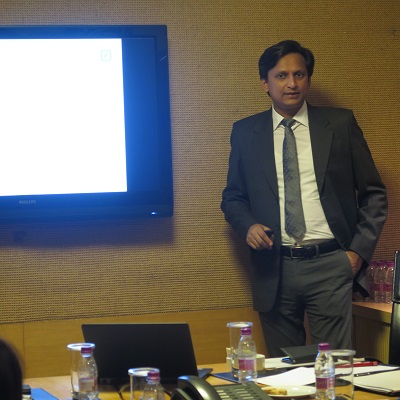 For his part, Mr. Kataria, Director, Head Financial Crime, South Asia of Deutsche Bank made clear that banks need to understand that AML risk is always present.
For his part, Mr. Kataria, Director, Head Financial Crime, South Asia of Deutsche Bank made clear that banks need to understand that AML risk is always present.
He cited the Wolfsberg Group-AML Principles for Correspondent Banking and emphasized the importance of following its guidelines.
Mr. Kataria pointed out that one factor to be considered constantly by AML experts is that due diligence is based on risk, and subsidiaries and affiliated banking institutions require AML control by themselves and from the parent bank.
Equally important was the need to not only hold constant dialogue with all internal participants but also with the Central Bank and financial regulators, as the flow of information is key to AML detection and learning.
In conclusion, Mr. Kataria said that effective AML policies require: (1) permanent monitoring of the relationship and transactions with corresponding banks, (2) being sensitive to risks on corresponding banks, (3) having sound policies, procedures and controls in place to identify , monitor, and manage risk and (4) aligning operations with respect to changes in regulations and financial risk conditions.
Following the early morning session with Ms. Karunakaran and Mr. Kataria, delegates boarded a bus towards downtown Mumbai to visit a successful technology company producing compliance and operation solutions for securities companies and banks.
The afternoon meeting was initiated by Sagar Tanna, Director and founder of TSS, a growing technology solution company in the Indian market. TrackWizz is one of their product suites offered. The company also develops module solutions according to banks’ compliance and operations requirements. The software solutions’ overall objective is to monitor and alert risks throughout the financial transaction. TSS originally started offering software solutions for securities companies and then expanded into serving transaction monitoring to regular banking procedures.
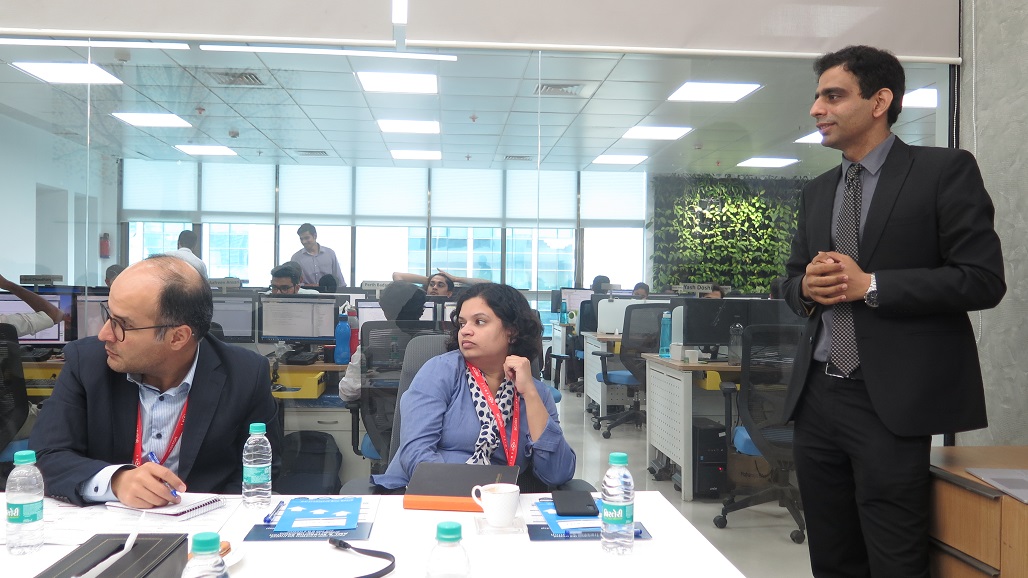
The highlight of the meeting was the opportunity for bankers to see how banking solutions are constructed and understand the software engine. Since 2008, TSS has been developing AML solutions acquired by hundreds of financial institutions.
The second day concluded with an evening celebration at a cocktail bar nearby, in the company of Fintelekt and TSS management. The friendly atmosphere was another good opportunity to further exchange ideas and insights into their banking operations and foster bonds of friendship amongs bankers.
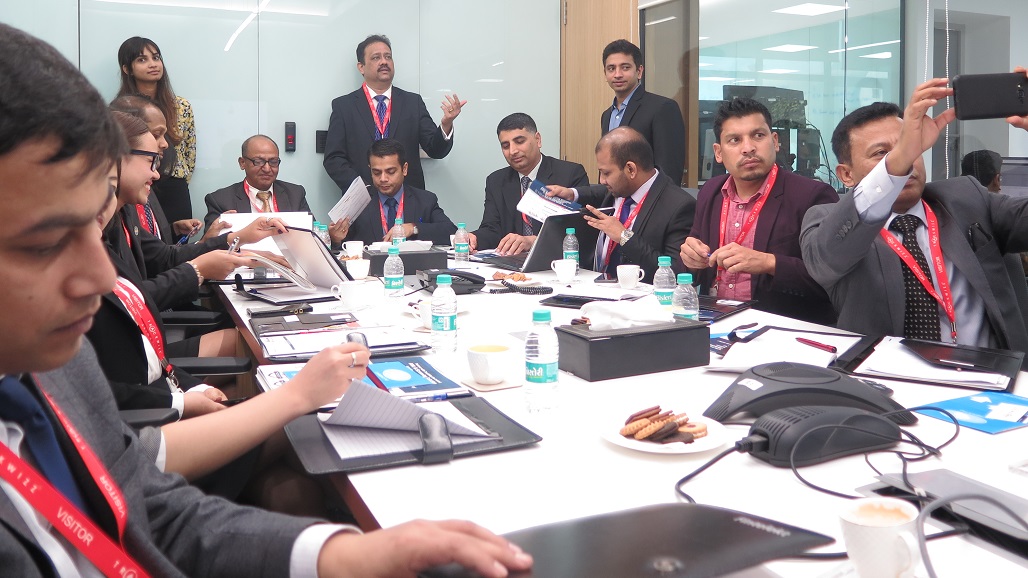
March 9th 2019
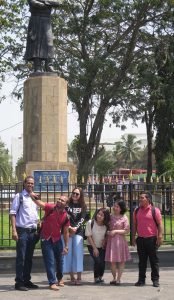 The third day was planned by Fintelekt for some sightseeing and relaxation. It started with a visit to the Prince of Wales Museum to learn about the pre-history and history of Mumbai up to the present dynamic Mumbai.
The third day was planned by Fintelekt for some sightseeing and relaxation. It started with a visit to the Prince of Wales Museum to learn about the pre-history and history of Mumbai up to the present dynamic Mumbai.
The Museum visit was followed by a 5-minute walk to the Gateway of India, a monument erected to commemorate the landing of King-Emperor George V and Queen-Empress Mary at Apollo Bunder on their visit to India in 1911.
The ABA & Fintelekt Short Term Visiting Program to Mumbai was concluded at noon, with a traditional southern India lunch at a famous Mumbai restaurant. After the lunch, delegates returned to their hotel in preparation for their flight back home.

Leave a Reply